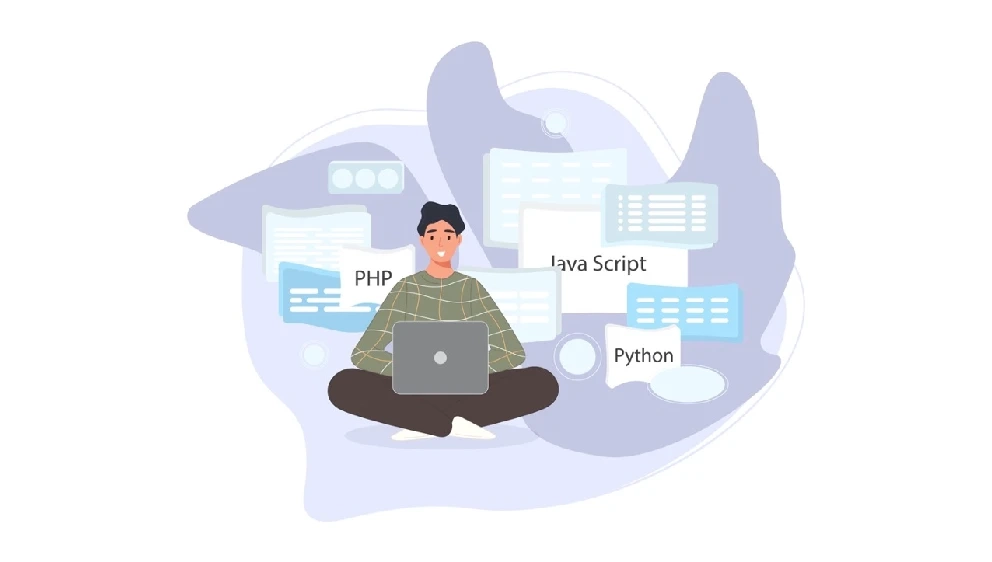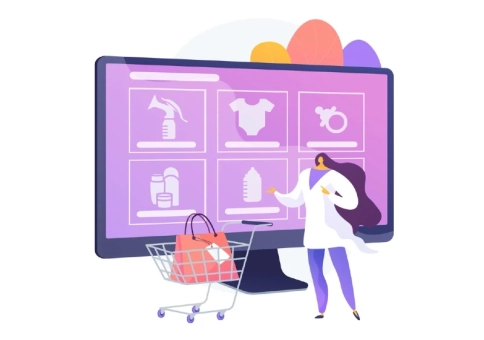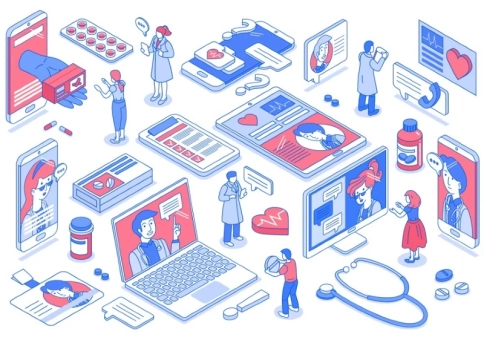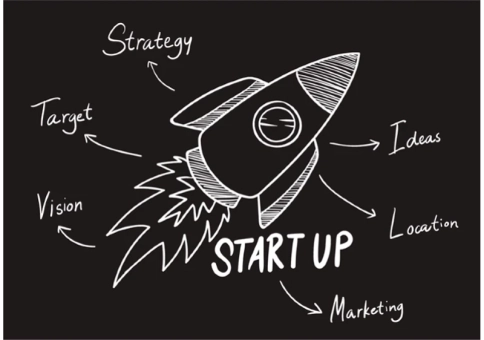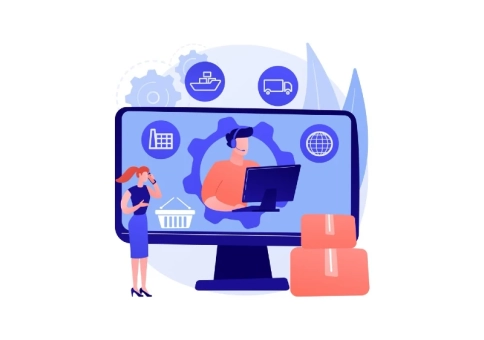Choosing The Best Tech Stack For Your Startup: What And Why?
Starting a new business is an exciting but also daunting process, and the number of questions that run through your head can definitely make it spin. Where do I get the funding? How do I reach the audience? Who do I partner with? But among those “where,” “how,” and “who,” there is one vital “which” that can’t be overlooked — which tech stack do I choose for my product?
With so many options to choose from, it might be hard to make a decision. And while the final choice will depend on a million factors, the starting point is always the same: take a look at the options you have, evaluate each one, and match them with your business requirements. In this post, we will help you with the first step and peek at the most popular choices to help you choose the best tech stack for a startup.
Starting Off: Top 5 Factors To Consider Before You Pick A Tech Stack
Before we move on to the specific technologies, let’s look at the general factors that will, in any case, influence your choice of a tech stack.
Project type
The first thing to consider when choosing a tech stack for your startup company is the kind of project you want to implement. For example, if you’re building an e-commerce site, you’ll need a different stack than if you’re building a social media platform. A health startup will most likely need different technologies than a fintech startup. Consider the features you need and the user experience you want to create, and choose a tech stack that aligns with those goals.
Cost
Money is always a significant factor for any business. You want to choose a tech stack that fits your budget while delivering the features you need. Keep in mind that the price goes far beyond just licensing fees: you’ll need to factor in the cost of development, maintenance, and upgrades, and the number might be different for each technology.
Scalability
Even if you start as a small business startup, you sure want your company to succeed and grow, and your tech stack should allow that. In most cases, you’ll need to choose a tech stack that can handle increased traffic and new features as your business expands, so it should be flexible and adaptable to constantly changing needs.
Time to market
TTM is another pain in the neck for any startup founder right after the funding. Your tech stack choice will significantly depend on how much time you are ready to allocate for the development — some technologies allow for a faster launch, while others will take a bit more of your time.
Talent availability
Choosing a startup tech stack is one task. Finding the right people to do the job is another. When deciding on a technology, you should consider the talent pool you have access to and (as we already mentioned) the cost of their work. Keep in mind that some technologies have a greater demand for skilled developers, which can drive up hiring costs. It's important to find a balance between the availability of talent and the associated expenses to make the right decision that fits your budget and ensures you have the right expertise for your tech stack.
Startup Technology Stack — Your Options
Now that we laid the groundwork, it’s time to dissect the most popular startup technology stacks and get one step closer to a successful product launch.
Image by svstudioart on Freepik
Java
Java is a versatile and widely-used programming language that offers scalability, platform independence, and a vast ecosystem of frameworks. Java is commonly used for enterprise-level products, such as large-scale web and mobile applications, e-commerce platforms, financial systems, and content management systems.
Advantages:
• Platform independence;
• Extensive choice of libraries and frameworks;
• Strong community support and a large talent pool of Java developers.
Disadvantages:
• Can be more wordy compared to some other languages;
• Can be resource-intensive for certain types of applications.
JavaScript
JavaScript is the world’s most commonly used programming language. JS is mostly used for web development, and it’s hard to imagine building interactive user interfaces, single-page applications, real-time applications, and browser-based games without it. JavaScript powers popular frameworks like React, Angular, and Vue.js, allowing developers to create robust front-end experiences. On the backend, Node.js leverages JavaScript for server-side scripting, facilitating the development of scalable web applications and microservices.
Advantages:
• Broad adoption and compatibility across web browsers;
• Excellent for building interactive user interfaces and web applications;
• Vast ecosystem of libraries and frameworks, including React, Angular, and Node.js.
Disadvantages:
• JavaScript's asynchronous nature can lead to complex code and potential bugs;
• Limited server-side capabilities compared to other back-end languages;
• Security concerns due to client-side execution.
MEAN
MEAN is a full-stack JavaScript framework that combines four key technologies: MongoDB, Express.js, AngularJS, and Node.js. This stack enables end-to-end JavaScript development, allowing developers to use a single language throughout the entire application, from the frontend to the backend. The MEAN stack is commonly used for building real-time web applications, single-page applications (SPAs), and dynamic websites. It provides a cohesive and efficient development experience, with seamless data transfer between the different components.
Advantages:
• Consistent use of JavaScript simplifies development and code sharing;
• Scalable and suitable for real-time applications;
• JSON-based data interchange between components.
Disadvantages:
• Performance concerns for large-scale or real-time applications;
• Limited tooling and support compared to more established frameworks;
• Increased code maintenance due to the entire stack being JavaScript-based.
Python
Python is a high-level, interpreted stack used to build apps in a wide range of domains. Frameworks like Django and Flask make Python an excellent choice for web development, allowing developers to build robust and scalable web applications quickly. Python's ease of use, along with its rich ecosystem of libraries and frameworks, makes it popular among data scientists for tasks like data manipulation, analysis, and visualization. It is also widely used in machine learning and AI, with libraries like TensorFlow and PyTorch providing powerful tools for building and training models.
Advantages:
• Scalability and performance optimization options;
• Seamless integration with other languages;
• Strong capabilities for data science and machine learning;
• Ideal for prototyping and rapid development.
Disadvantages:
• Slower execution speed compared to some other languages;
• Global interpreter lock (GIL) can limit performance for multithreaded applications;
• Not as suitable for low-level system programming as some other options.
.Net
.NET is a cross-platform framework introduced by Microsoft that offers a variety of programming languages like C#, VB.NET, and F#. It is commonly used for developing enterprise-level applications, web services, e-commerce platforms, and Windows desktop applications. With the recent introduction of .NET Core, the framework has also become more flexible and suitable for modern cloud-native applications.
Advantages:
• Versatility and cross-platform compatibility with .NET Core;
• Robust framework with extensive libraries for various development needs;
• Seamless integration with other Microsoft technologies and tools.
Disadvantages:
• Limited community support compared to some other programming languages;
• Some features and tools may be platform-specific.
RoR
Ruby on Rails is a web application framework that offers rapid development capabilities and follows the MVC (Model-View-Controller) architectural pattern. Ruby on Rails is particularly well-suited for startups and small businesses looking to build web applications quickly. It excels in building content management systems, marketplaces, social networking platforms, and e-commerce websites. With RubyGems and a vibrant community, developers have access to a variety of libraries and plugins, which simplifies development and reduces TTM.
Advantages:
• Convention-based configuration allows for rapid development;
• Strong community support and extensive libraries and plugins;
• Suitable for prototyping and building MVPs.
Disadvantages:
• Performance issues are possible in highly scalable or complex applications;
• Limited flexibility compared to some other frameworks;
• Smaller talent pool compared to more mainstream technologies.
DART
DART is a general-purpose programming language introduced by Google. It can be used both for client-side and server-side applications. On the client side, DART can be compiled to JavaScript and run in modern web browsers. It provides a framework called Flutter, which is used for building cross-platform mobile applications. DART offers a range of features, such as asynchronous programming, hot reloading, and a rich set of libraries and packages. It is particularly suitable for developing UI-intensive applications, real-time systems, and applications that require high performance.
Advantages:
• Higher performance thanks to compilation to native code;
• Fast iteration and development allowed by hot-reload feature;
• Single codebase for multiple platforms using Flutter.
Disadvantages:
• Smaller ecosystem compared to more established languages;
• Limited tooling and libraries compared to some other frameworks.
LAMP
LAMP is an acronym for a widely-used open-source web development stack consisting of Linux, Apache, MySQL, and PHP. It provides a complete environment for hosting dynamic websites and web applications. The LAMP stack is versatile and widely adopted, making it suitable for a range of web development projects. It is particularly favored for building content management systems (CMS), blogs, e-commerce platforms, and database-driven web applications. Despite being very popular once, the stack is now losing its fame to MEAN and other frameworks.
Advantages:
• Cost-effective with all components being open-source;
• Widely supported and well-documented;
• Strong community support and a large number of available resources.
Disadvantages:
• Scalability and performance limitations for high-traffic websites;
• Relatively slower compared to some other stacks.
Mobile Tech Stack
While some of the stacks we just talked about can be and are used for mobile development, it makes sense to take a closer look at some of the stacks you might opt for if you are looking to build a mobile application.
Kotlin
Kotlin is a modern, statically-typed programming language that has gained significant popularity in mobile app development, particularly for Android. It offers several advantages for mobile developers, making it an attractive choice for building robust and efficient mobile applications.
Advantages:
• Seamless interoperability with Java;
• Concise syntax and enhanced developer productivity;
• Null safety features to prevent null pointer exceptions;
• Built-in support for coroutines for asynchronous programming;
• Strong community support and growing ecosystem.
Disadvantages:
• Potential longer build times;
• Limited support for some platforms;
• Smaller talent pool.
Swift
Swift is a powerful and highly intuitive programming language developed by Apple for iOS, macOS, watchOS, and tvOS app development. It provides numerous benefits specifically for iOS and macOS app developers, making it a preferred choice in the Apple ecosystem.
Advantages:
• Safety features to prevent common programming errors;
• High performance and efficient memory management;
• Clean and expressive syntax for readable and maintainable code;
• Seamless interoperability with Objective-C;
• Tight integration with Apple frameworks and APIs.
Disadvantages:
• Limited ecosystem and community support for non-Apple platforms.
• Swift evolution may introduce changes requiring code updates.
Struggling To Choose the Right Stack? Fetocan Can Help
Picking out the right technologies for your product might be hard, especially if you are a non-tech founder or don’t have enough experience in the chosen domain. The good news is, the Fetocan team is always here to help you.
Drop us a line to schedule a call, share your product details, and we will do our best to help you at every step of the development, from the stack choice to coding, testing, and launch. With the highly-skilled experts on board, we can pull off any (or almost any) project within the agreed time and budget — and will always do a bit more than necessary to exceed your expectations.
FAQ
• What factors should I consider when choosing a tech stack for my startup?
• First, assess your project requirements, including scalability, performance, and functionality needs. Next, consider the expertise of your development team and choose a tech stack that aligns with their skills. Time to market is another crucial factor, as you'll want to select technologies that enable rapid development and deployment. Additionally, think about the future growth of your startup and select a tech stack that allows for scalability.
• What tech stack should I use to create an iOS app?
• When it comes to developing an iOS app, you can opt for Swift as a primary programming language as well as Apple's UIKit or SwiftUI for building user interfaces, Core Data for data management, and Core Animation for animations and visual effects. Additionally, determine if your app requires backend components and APIs, and choose suitable options like Node.js with Express, Django with Python, or Firebase for serverless development.
• Are there any common pitfalls to avoid when choosing a startup technology stack?
• Look out for vendor lock-in, where choosing proprietary technologies can limit your ability to migrate or scale your application. Lack of community support is also a concern, as it can make troubleshooting and finding solutions more challenging. Scalability limitations are important to consider, as some tech stacks may struggle to handle high traffic or increased data volumes, hindering the growth of your startup. Lastly, consider the availability of skilled developers for the chosen tech stack, as opting for highly specialized or less popular technologies can limit your options for hiring and expanding the development team.

